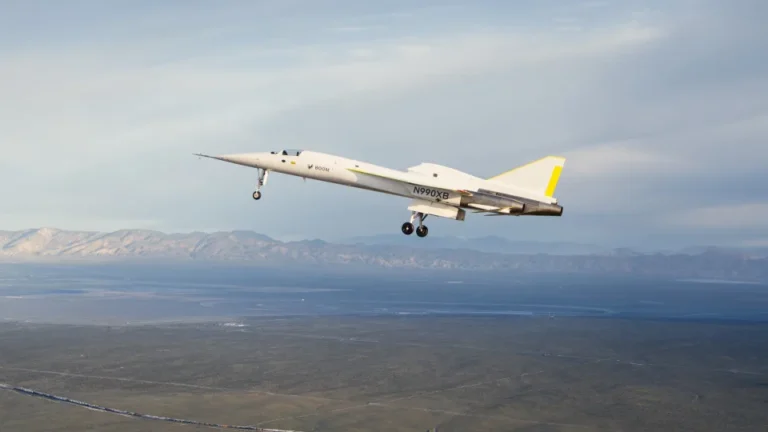Later this year, tests will be done in Mojave, California’s supersonic route.
The Federal Aviation Administration (FAA) has given its license for Boom’s supersonic XB-1 test plane to fly faster than Mach 1, according to the announcement made by the corporation. In the latter part of this year, tests are scheduled to take place at the Black Mountain Supersonic Corridor in Mojave, California. The outcomes of these tests may assist demonstrate that the design is feasible in terms of aspects such as the amount of fuel consumed, the speeds, and the flight characteristics.
Blake Scholl, the creator and CEO of Boom Supersonic, expressed his excitement over the historical first supersonic flight of the XB-1. “I’m looking forward to its historic first supersonic flight,” he remarked. “We thank the Federal Aviation Administration for supporting innovation and enabling XB-1 to continue its important role of informing the future of supersonic travel.”
A pair of test pilots successfully completed a test flight of the X-B1 at subsonic speeds, which is just a few weeks prior to the approval being granted. According to the corporation, this comes after a comprehensive analysis and environmental assessment, and it requires a second plane to follow the XB-1 in order to monitor and record flight safety.
Before making an effort to break the speed of sound, the business will first complete ten to twenty aircraft flights. According to Boom, it will “systematically expand the flight envelope during that time” in order to confirm performance and handling qualities. In addition, it will complete in-flight checks of all systems and demonstrate a safe margin to flutter/vibration boundaries. In the event that the first supersonic flight takes place, test pilot Tristan “Geppetto” Brandenberg will be in charge of flight operations.
However, passenger flights are not expected to begin for quite some time. The XB-1 is a scaled-down version of Boom’s ultimate goal, which is a commercial liner called Overture. It is anticipated that the Overture will be able to accommodate fewer than one hundred passengers at “business class” comfort levels. According to the corporation, you will be able to go from Tokyo to Seattle in a span of four hours and thirty minutes using that particular aircraft.
The company has experienced a number of problems, including the postponement of test plans and a disagreement with Rolls-Royce, the company that manufactured the original engine. Following that, the corporation formed a partnership with a company known as FTT in order to create its very own distinctive “Symphony” jet engine. American Airlines and United Airlines are among the clients that have already placed orders for numerous jets, indicating that the corporation already has a waiting list of consumers.
The National Aeronautics and Space Administration (NASA) is also working on a supersonic jet known as the X-59 that has a decreased sonic profile. However, Boom Supersonic has not offered a great deal of information regarding how it intends to reduce the supersonic boom.

